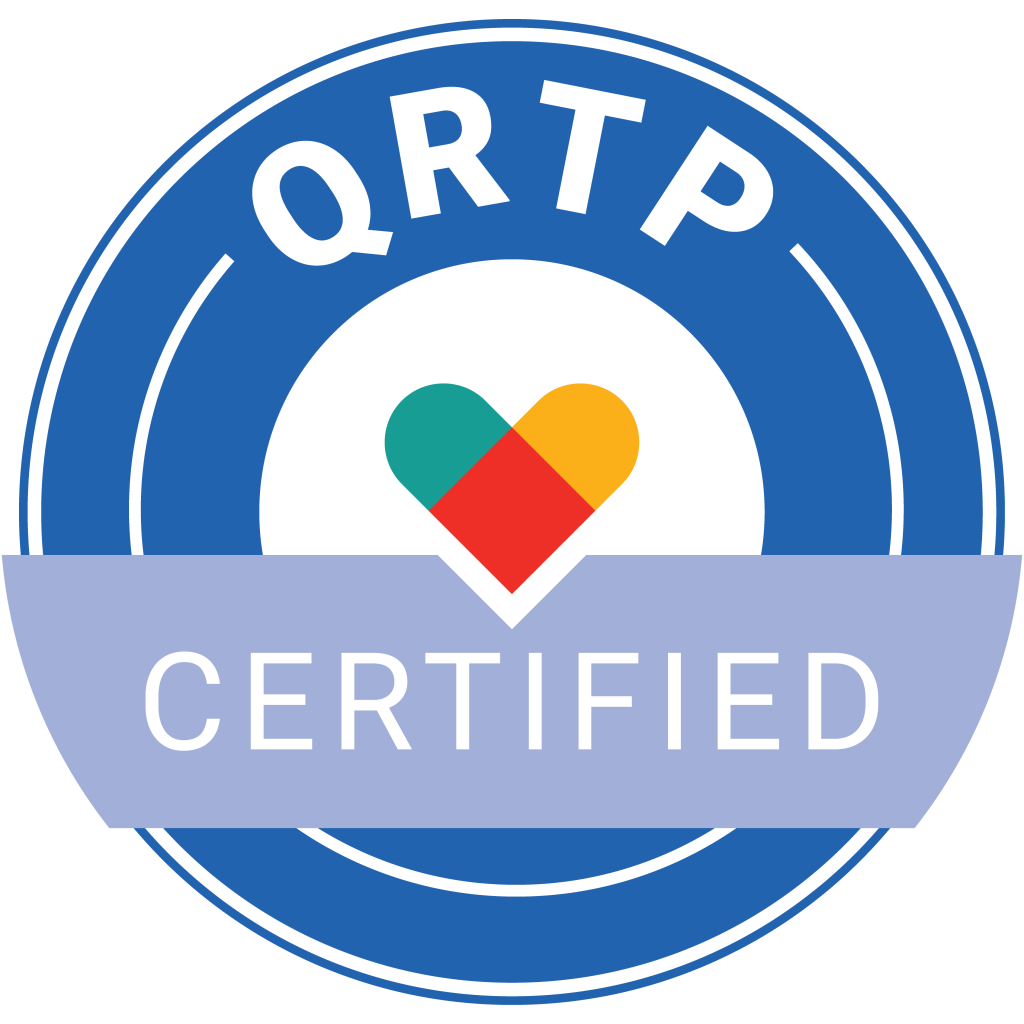Conducting a mock survey before an accreditation review is a very useful process. It is a final step in checking for readiness, and determining what areas still need improvement before surveyors come onsite. If your organization is interested in conducting a mock survey, please call us at 212.209.0240 or email Sara O’Neil
What is an Accreditation Champion?
What are some suggestions for involving community stakeholders in the accreditation process?
Are You Measuring Your Service Outcomes? You Should Be!
According to a recent study in the International Journal for Quality in Health Care, “what cannot be measured, cannot be improved.”
With detailed digital data available just a few clicks away, non-profits are being held accountable for measuring their service outcomes. In fact, all organizations seeking to gain and maintain accreditation are required to record and report outcome statistics as part of their performance improvement programs.
For example, while The Joint Commission has always required organizations to assess outcomes of care, treatment or services, organizations are now required to accomplish this through the use of a standardized tool or instrument. By utilizing “measurement-based care,” The Joint Commission “believes these standards enhancements will help accredited customers meet the growing demand to demonstrate the value of their services and increase the quality of the care, treatment, or services they provide.”
For health and behavioral service providers, the focus on process – or fee-for-service arrangements – is obsolete: the new priority centers on positive patient results, which must be documented.
This approach rejects fee-for-service reimbursement, where “individual providers are incentivized to order more tests and procedures and manage more patients in order to get paid more, regardless of patient outcomes,” according to the New England Journal of Medicine.
Value- and performance-based models aim to rein in ballooning costs. The outcome-based orientation is partially designed to help lower spending.
Another broad goal is to improve care and help patients efficiently navigate the health care system. Collaboration and customized services are replacing the top-down model, where experts determine the procedures and patients follow along.
Many major insurance companies are reorienting their reimbursement schedule to reflect this data-driven model. According to national accrediting body CARF, Cigna, Aetna and U. S. Healthcare plan to increase value-based payments to as much as 90 percent of all reimbursement spending in the next few years.
Beyond private insurance companies, state and federal mandates are also pushing patient care toward outcome-based services.
The Centers for Medicare & Medicaid Services (CMS) has begun implementing value-based changes, for example. Under Section 223 of the federal Protecting Access to Medicare Act, moreover, the Substance Abuse and Mental Health Services Administration initiated a pilot program in eight states to introduce value-based outcomes in certified community behavioral health clinics.
The program includes technical specifications and data-reporting templates requiring the collection of 21 measurable data points.
Participating states are mandated to “collect and report on encounter, clinical outcomes, and quality improvement data,” according to CMS. “The statute also requires annual reporting by the states that will entail collection of data which can be used to assess the impact of the demonstration program.”
In addition, fee-for-service reimbursement is being replaced by the prospective payment system (PPS), which is based on the quality of care rather than services provided.
Another new initiative implemented by CMS, Bundled Payments for Care Improvement, links “payments for the multiple services beneficiaries receive during an episode of care.” Acute care hospitals, skilled nursing facilities, home health care agencies and inpatient rehabilitation facilities, “enter into payment arrangements that include financial and performance accountability for episodes of care.”
CARF reports that state regulators are also spurring the shift toward performance-based models and criteria by promoting prevention and methods that consider social determinants of heath.
“The future is undoubtedly in favor of providers that can implement strong performance management practices,” according to CARF. Agencies that reorient their practices in this new direction will be well-positioned to achieve and maintain accreditation status.
Contact Accreditation Guru to help put your organization on course to thrive in this brave new world of outcome-based measurement.
Meet Our Newest Accreditation Guru Team Member
We are happy to announce that Viviane Ngwa — a Clinical Social Worker, is joining Accreditation Guru as our newest Accreditation Consultant!

She comes with leadership experience in the provision of services to individuals with intellectual and developmental disabilities, services to youth with juvenile probation involvement as well as extensive experience in child welfare and behavioral health service structure across many states.
Viviane is a current member of the Board of Directors of Family Focused Treatment Association (FFTA) and a past Board President. She was also a member of the Board of Trustees of the Council on Accreditation (COA) where she currently serves on the Standards Committee and the Board Development Committee. She has been a COA Peer Reviewer Team Leader and a Hague Evaluator for many years leading numerous accreditation site visits across the United States and Canada.
Viviane is a wonderful addition to our growing team!!
Meet Our Newest Accreditation Guru Team Member
We are happy to announce that Tracy Collander, LCSW a nationally regarded accreditation expert, is joining Accreditation Guru as our newest Accreditation Consultant! A former executive with The Joint Commission, she brings deep knowledge and experience to her position as accreditation consultant.

A leader in the behavioral health field for more than 25 years, Tracy has amassed extensive experience in child welfare, addiction treatment, psychiatric inpatient treatment, and community mental health services.
Her credentials include serving as executive director of behavioral health, Linden Oaks at Northwest Community Healthcare, and as executive director of the Behavioral Health Accreditation program at The Joint Commission, one of the largest accreditation agencies in the country.
Tracy is a wonderful addition to our growing team!!
Nonprofit Audit Committee Benefits: Why your nonprofit should have one
Nonprofit Audit Committee Benefits Summary
- Best practice to have a nonprofit audit committee to provide accountability for organization’s independent audit
- finance committee is responsible for monitoring the organization’s financial status
- audit committee is given authority for overseeing the organization’s external audit process.
- To ensure that the audit process is objective, an audit committee should be an “independent” body, meaning that no one on this committee is also employed by the nonprofit
- Directly responsible for the selection, retention and oversight of the independent auditor
- Having an audit committee lends to the transparency of the organization to the outside world via reporting on the IRS Form 990; all 990 tax returns for charitable orgs are publicly posted online.
Want to learn more? Read our article “Why Your Nonprofit Needs an Audit Committee.”
Succession Planning – It’s Not All About You
At some point, every organization will face the challenges of a change in leadership. Though many of these transitions are anticipated – like when a CEO or board chair retires – other times, agencies are faced with the task of filling an unexpected opening.
Nonprofit organizations are known for doing their best to provide stellar services to those in need while working with limited funding and, often, fewer human resources personnel than the typical for-profit company. It’s the nature of the business.
The key to making any leadership change a seamless process for staff and clients alike is to thoughtfully develop a succession plan along with intact, actionable policies that will guide your decisions and help your organization Prepare for Greatness!™
Avoid Service Disruptions by Developing a Plan
Planning ahead is essential – before potential shake-ups take up valuable resources. Always include the executive leadership staff and the board of directors in succession planning and its implementation. Get them onboard for developing an emergency transition plan that outlines the delegation of responsibilities and authority in the event of an unplanned vacancy or leadership disruption.
For planned leadership transitions, map out an appropriate timeline for a smooth transition. This also helps ensure that a proper support system is in place for new leaders, including mentoring opportunities and well-defined goals for the individual and the organization as a whole.
Getting buy-in from the principal people in the organization helps keep everyone focused on developing the most beneficial policies. Make it an organizational goal to support new leadership, allowing him or her to develop a personal comfort level and lead with confidence.
Though obvious, it bears repeating: Communication is paramount. Throughout the entire transition process, it is essential to maintain fluid lines of communication within all levels of the organization.
Develop a Process to Ensure Smooth Transitions
If your organization puts policies into place, they should be thoughtfully analyzed, planned and reviewed – just as agencies do for budgeting, daily operations, strategic planning and other essential functions.
Ensure continuity by developing a list of potential leadership successors based on the ability to enhance and capitalize on individual strengths and effectively match the best candidate to the most appropriate position.
Because nonprofits must generally do more with less, it is beneficial to create ample opportunities for staff and board members to cross-train and/or broaden their leadership skills so that there are several individuals at the ready to step into larger roles with more responsibility when the time comes.
Give special attention to developing your organization’s group of talent. Concentrate your valuable resources on educating and strengthening the skills of your agency’s leadership candidates to build a reserve of exceptional contenders when the time arises.
When compiling your candidate list, be sure to consider challenges such as maintaining an adequate amount of staff diversity, recruitment of a wide range of individuals who provide the skills your agency will need in the future, and long-term employee retention.
Another potential affliction for nonprofits is Founder’s Syndrome, where an organization’s founder or other long-employed leader feels that no one will be able to do all of the work required and/or care more about the mission and staff than he or she does. If a founder refuses to partake in succession planning the entire enterprise can be jeopardized when he or she leaves – or dies. It is up to the board to assert its oversight and prepare for the inevitable transfer of power if the entity is to survive.
Consider Best-Case and Worst-Case Scenarios
Incorporate various situations into your planning. It is easier to prepare for a months-long, anticipated CEO retirement than it is when a key employee takes a job at another organization without warning or requests a leave of absence for several months to care for a stricken parent or recover from an injury.
Consider whether installing an interim leader into a management position would be of greater benefit to your organization than quickly placing someone in a position just to get it filled. This is especially important for the highest-level positions in the agency where it may be beneficial to seek outside candidates for consideration.
And, of course, thoughtful and timely communication before, during and after the transition of leadership positions supports the success of both the individual and your organization as a whole so that the focus will remain on what you are all there to do – fulfill your mission of serving others.
With proper planning beforehand, the stress of selecting a high-level replacement and transitioning that person into the job will be much easier to accomplish. By implementing these tips and instituting a process, you can help your organization Prepare for Greatness!™ when faced with potentially disruptive personnel changes.
Time is Tight: Seek Accreditation Now for QRTPs [as Mandated by the Family First Prevention Services Act]
The new Family First Prevention Services Act (FFPSA) has generated many questions about the timing of when each state will decide to implement the regulations and, in turn, when the new category of residential settings called Qualified Residential Treatment Programs (QRTPs) are required to become nationally accredited. Accreditation for qualified residential treatment programs has thus become a hot topic for such centers.
FFPSA is changing the face of child welfare by authorizing federal dollars to support prevention services for children identified as being in “imminent risk” of entering foster care. It also shifts the focus from relying on congregate or group care settings to keeping children in family-like atmospheres – specifically foster family homes.
Under FFPSA, with limited exceptions, states will be able to dedicate federal Title IV-E funding for children’s care maintenance payments in a residential setting after the first two weeks of placement. Approved settings, including the new QRTPs, must use a trauma-informed treatment model and employ registered or licensed nursing staff and other licensed clinical staff who are onsite according to the treatment model and available 24 hours a day and seven days a week.
The law institutes other requirements related to formal assessments of children that ensure the appropriateness of the placement, family engagement and aftercare support for at least six months post-discharge. For additional information, visit: http://www.ncsl.org/research/human-services/family-first-prevention-services-act-ffpsa.aspx
States’ Decisions – To Delay or Not Delay?
FFPSA specifies that to be considered as an official QRTP, the program must be licensed and accredited by a Department of Health and Human Services-approved accreditation agency: Commission on Accreditation of Rehabilitation Facilities (CARF), Joint Commission on Accreditation of Healthcare Organizations or Council on Accreditation (COA) by October 1, 2019, unless a state requests a delay for up to two years.
States are presently weighing their options to request a delay or “opt-in” to comply with the new restrictions regarding reimbursement. States must submit their request to the HHS Children’s Bureau by November 9, 2018 if they intend to delay the effective dates of certain provisions in the Family First act. However, states may still change their decision after their plan has been submitted, so nothing is definitive at this point – except that QRTPs will need to become accredited.
A number of service providers are opting to wait and see if their state will delay the effective dates with the hope that this will provide additional time to become nationally accredited. However, a delay in accreditation for qualified residential treatment programs is a gamble on the service provider’s future.
“I recommend that non-family-based care providers like group homes or residential programs who wish to become a licensed QRTP, begin the process of accreditation now,” said Leslie Ellis-Lang, Managing Director, Child and Youth Services at CARF. “It is the safest action.”
Accreditation for Qualified Residential Treatment Programs
Most service providers require 12 to 18 months or more to become nationally accredited. With the initial effective date of October 1, 2019 one year away (unless a state delays enactment), there is still some time to complete the process.
To meet the FFPSA deadline, organizations must consider the time necessary to:
- Select an accrediting body
- Secure budgetary allotment and board approval
- Develop accreditation-required plans, including an organization-wide strategic plan, among others
- Prepare standards-compliant policies, procedures and protocols
- Implement accreditation standards (both CARF and COA require six months of conformance with standards before an onsite survey may take place; Joint Commission does not require this “look back”)
- Make operational, service delivery and facilities improvements, as necessary
- Prepare staff and board members for the accrediting body’s onsite survey
Accreditors’ Efforts and Deadlines
Under such a sweeping federal mandate as FFPSA, thousands of organizations throughout the United States will apply for accreditation at the same time, which can strain the capacity of the accrediting bodies.
The good news is that each of the three (presently) approved agencies (CARF, COA, Joint Commission) have been proactively preparing for this onslaught of new applicants by increasing their operational staff and adding surveyors to conduct the onsite reviews.
Yet each accrediting body has its own timeline, based on when applications are due and the scheduling of onsite surveys. Regardless of which body is selected, an organization should generally estimate that it will take at least 12 months to achieve accreditation.
In order to complete the process and receive accreditation by October 1, 2019, organizations must submit their application and deposit by the following deadlines:
CARF:
CARF recommends that organizations choosing to use the 2018 Child and Youth standards for their survey and wanting to be notified of their outcome prior to October 1, 2019, should submit their application by December 31, 2018.
COA:
COA’s application deadline for organizations working toward the October 1, 2019 benchmark is November 19, 2018.
Also, in October 2018, COA will provide an application fee refund (in the form of a credit against future fees) for organizations that are mandated by FFPSA and are pursuing accreditation for the first time. An organization must complete its initial application by October 3 and fully execute an accreditation agreement by October 31, 2018 in order to receive this benefit.
The Joint Commission:
To complete the accreditation process and receive a Joint Commission accreditation award by October 1, 2019, organizations are “strongly encouraged” to submit an application and deposit by December 31, 2018 with a request for onsite survey (“ready date”) of no later than April 1, 2019.
Regardless if a state decides to opt-in or delay the FFPSA regulation and requirement for QRTPs, all service providers are strongly encouraged to begin the road to national accreditation as soon as possible. No matter what a particular state decides to do, the mandate is here to stay. Don’t gamble on your organization’s future!
Accreditation Guru is available to assist in the accreditation for qualified residential treatment programs, child welfare and behavioral healthcare organizations nationwide as they navigate the road to accreditation in an efficient and streamlined manner. For more information, contact us at Info@AccreditationGuru.com.
Addiction Treatment Centers Need Certification to Advertise on Facebook
Last year, Google barred advertisements from appearing in search results for addiction treatment centers in the United States. Starting last month, however, the company allowed centers with LegitScript Addiction Treatment Certification to run ads on its platform.
Now, Facebook recently announced that it will also require that addiction treatment centers achieve certification before they are approved to advertise on its properties, including Instagram and Messenger. LegitScript, a verification and monitoring service for online pharmacies, charges $995 for initial certification and $1,995 for annual vetting.
Google and Facebook’s advertising restrictions stemmed from complaints about addiction centers that targeted people suffering from addiction, offering sub-par clinical services to the highest bidder or making out-of-state recommendations solely to collect a referral fee. Other disreputable addiction treatment centers inflate staff qualifications and engage in improper billing.
Still, it is important to remember that certification represents a lower standard than accreditation. There is no need to rely on random internet searches to find reputable addiction treatment providers: just determine if a given organization is nationally accredited by an independent accrediting agency.
To earn national accreditation, an external panel of experts conducts thorough on-site scrutiny of addiction and human services organizations to ensure that they adhere to the rigorous guidelines and criteria set by the nationally recognized accrediting bodies. The initial process takes up to a year of preparation and organizations must reapply for accreditation every three or four years to maintain the designation.
National accreditation provides independent third-party validation of an organization’s quality of care. Addiction treatment centers and other human service organizations usually tout this status on their websites. Reputable treatment providers can also be found directly on the accrediting bodies’ websites, including The Joint Commission (formerly JCAHO), the Commission on Accreditation of Rehabilitation Facilities (CARF) and the Council on Accreditation (COA).
LegitScript’s certification applies to “any website, application, or merchant that provides information about in-person drug or alcohol addiction treatment, or facilitates in-person or online drug or alcohol treatment, other than at a private residence or non-clinical setting.” Recovery residences that “do not provide clinical services or addiction treatment, provide or purport to provide a cooperative living environment in a non-commercial location (a private residence or similar setting), and are not part of a larger treatment program offered by an addiction treatment provider, are not eligible for certification.”
Read more about the crackdown on addiction treatment advertising online here










